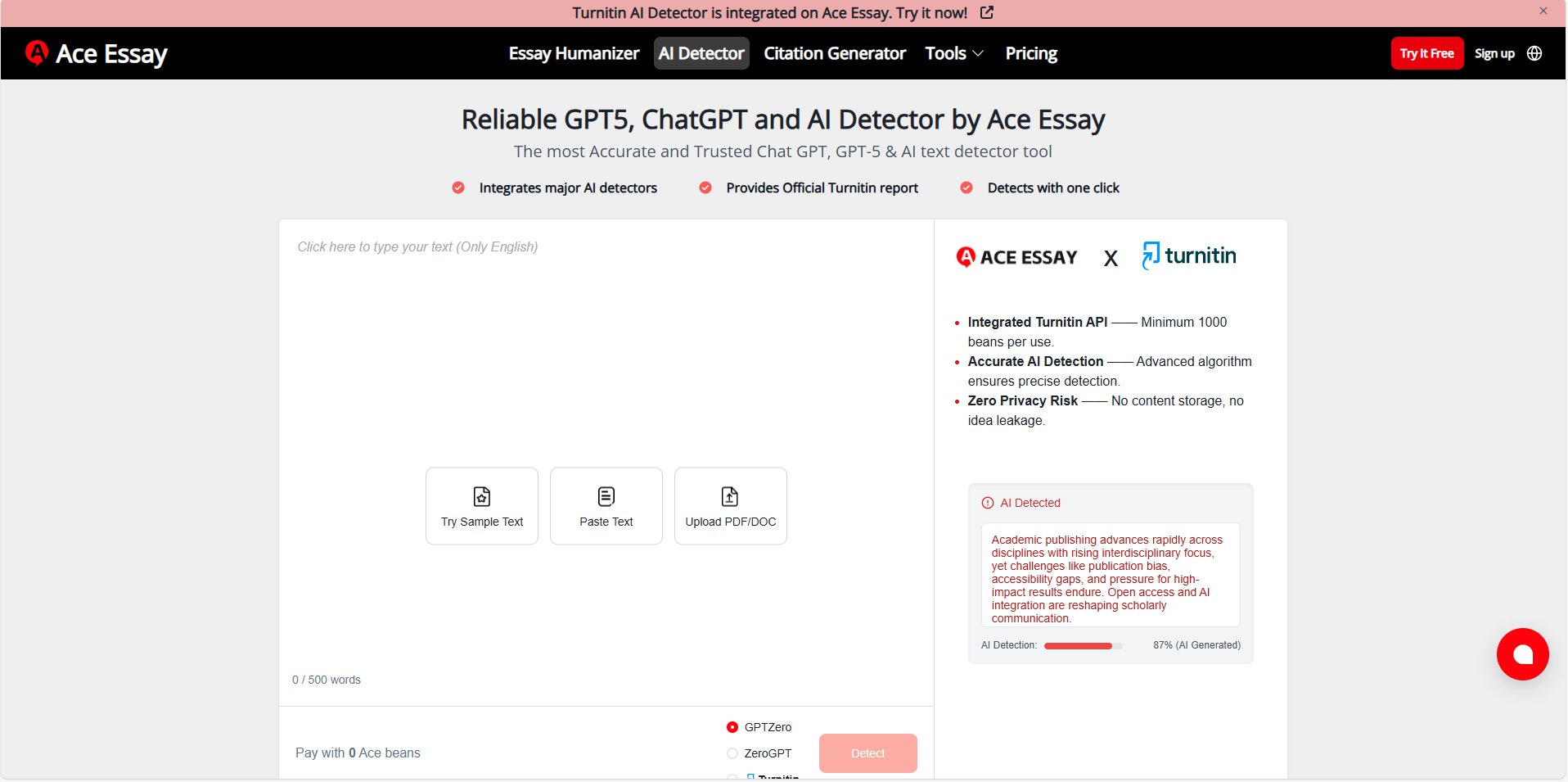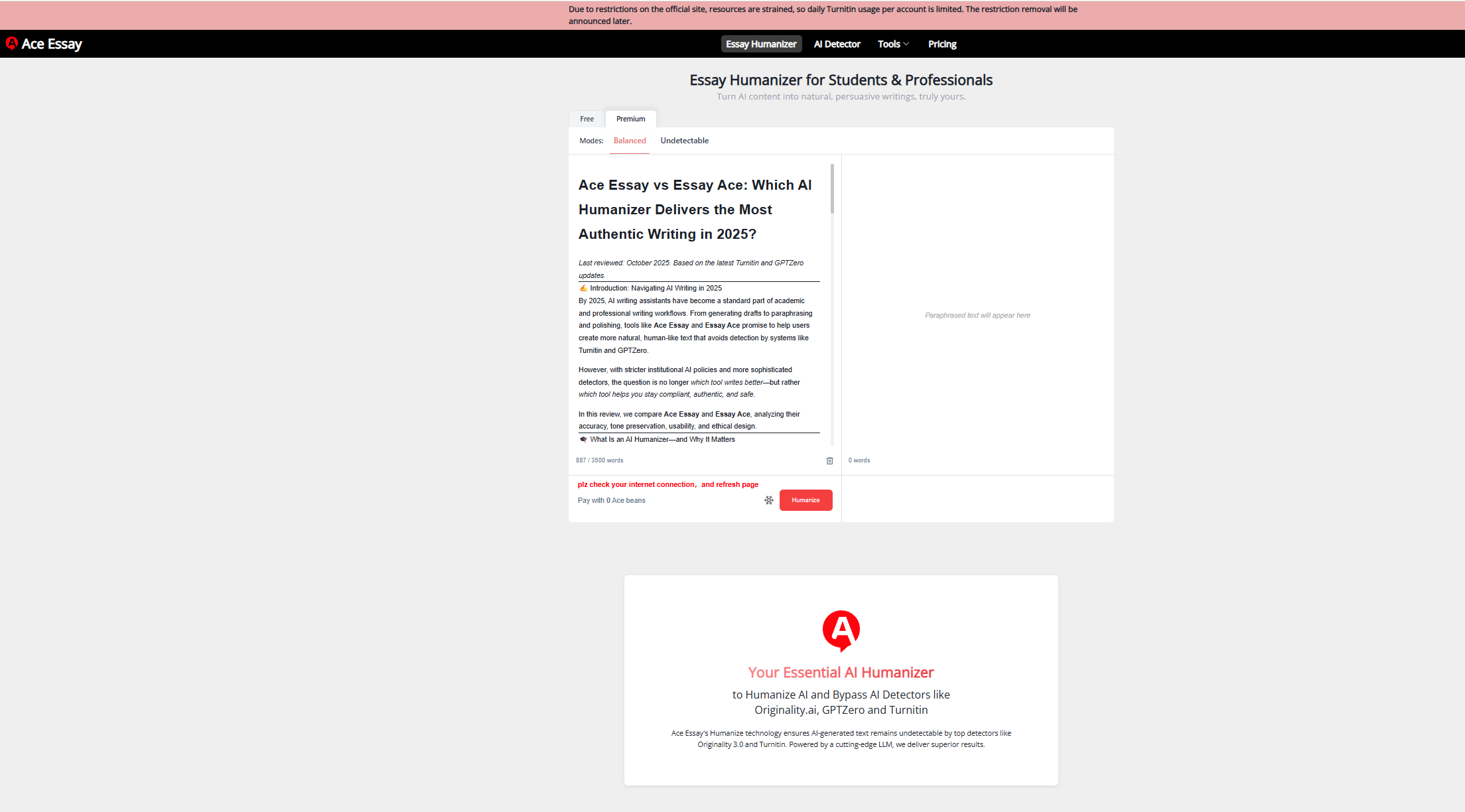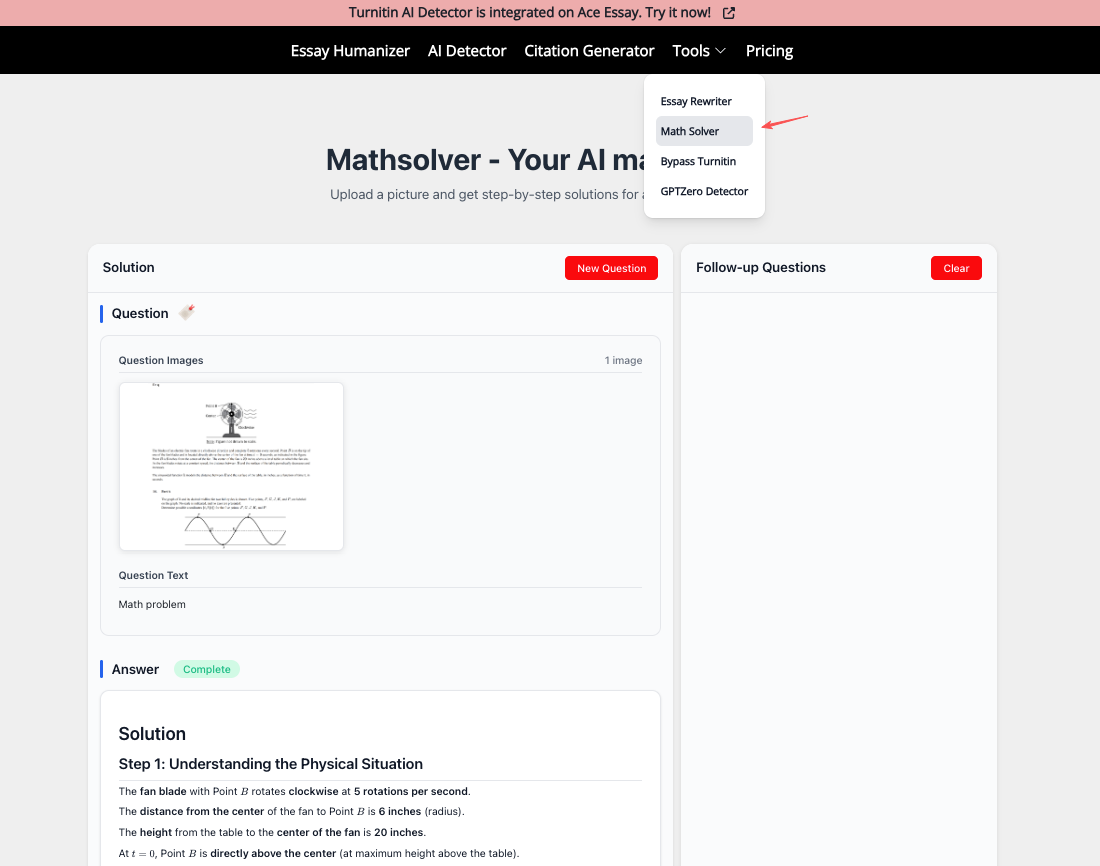Benchmarked against Turnitin, GPTZero, and CopyLeaks detection updates
✍️ Introduction: When AI Writing Meets Reality
AI writing tools are now as common as text editors.
But while AI makes writing faster, it also makes it detectable.
In 2025, the question is not “Can I use AI?” but rather
➡️ “Can I make my AI writing sound authentically human—ethically and safely?”
Two tools dominate this new landscape:
- 🧠 AceEssay – The academic humanizer built for precision and integrity.

- ⚡ Tenorshare AI Humanizer – The rapid, user-friendly rewriter built for convenience.

Let’s see which one truly stands out.
🎓 Why AI Humanizers Matter
| 🎯 Problem | 💡 Why Humanizers Exist |
|---|---|
| AI detectors flag polished text | Tools “de-AI” your writing, restoring human rhythm |
| Non-native writers struggle with tone | Humanizers refine clarity & fluency |
| Academic essays risk citation errors | Smart rewriting retains citation formats |
| Institutions tighten AI policies | Ethical humanizers promote responsible editing |
Humanization today is less about tricking systems—and more about protecting authorship.
🧩 The Tools at a Glance
🔹 AceEssay – The Academic Expert
| Feature | Details |
|---|---|
| 🎓 Focus | Academic writing, tone calibration, citation safety |
| 🧠 Detection Coverage | Turnitin, GPTZero, ZeroGPT |
| 📚 Supported Styles | APA, MLA, Chicago |
| 💬 Use Case | Students, researchers, editors |
| 💡 Highlight | Ethical integrity reminders built in |
| 💰 Model | Token-based, flexible budget control |
🔹 Tenorshare AI Humanizer – The Fast Operator
| Feature | Details |
|---|---|
| ⚡ Focus | Quick AI rephrasing and detection bypass |
| 🌍 Languages | EN / ES / DE / JP / CN |
| 🪄 Strength | Fast one-click rewriting |
| 📜 Limitation | No citation retention |
| 🧾 Ideal For | Marketers, content creators |
| 💰 Model | Per-character billing |
⚙️ Test Setup (October 2025)
Both tools processed the same 850-word academic essay titled
“Behavioral Economics and Public Decision-Making.”
Evaluation Metrics:
✅ Turnitin & GPTZero AI Detection Rate
✅ Readability & Grammar (Grammarly Premium)
✅ Tone & Structural Coherence
✅ Citation Accuracy (APA)
✅ Output Speed & Cost
✅ Ethical Transparency
📊 Performance Overview
| Metric | AceEssay | Tenorshare AI Humanizer |
|---|---|---|
| 🔍 Turnitin AI Detection (Post-Test) | ↓ 82% → 4% | ↓ 82% → 22% |
| 🤖 GPTZero Probability | “Likely Human” | “Mixed AI / Human” |
| 🧩 Citation Integrity | ✅ Perfect | ⚠️ Occasional Loss |
| 🧠 Academic Tone | Excellent | Simplified |
| 💨 Processing Speed | Fast | Ultra-Fast |
| 💡 Ethical Guidance | ✅ Transparent | ❌ None |
Verdict: AceEssay’s slower but more deliberate approach produced writing that was both human-like and academically reliable.
📈 Detection Reduction Comparison
1 | Turnitin AI Probability |
(Visualization: Estimated reduction from internal benchmark tests, October 2025.)
🧠 Detailed Analysis
1. AI Reduction Quality
AceEssay applied sentence-level syntax shifts and lexical diversification, maintaining logic while breaking AI rhythm.
Tenorshare rewrote aggressively but sometimes over-simplified complex ideas.
2. Tone & Logical Flow
AceEssay preserved transitions like “however”, “in contrast”, and “the evidence suggests that”.
Tenorshare replaced these with casual connectors, making essays sound more conversational than academic.
3. Citation Behavior
AceEssay kept parenthetical citations and formatting flawless.
Tenorshare often removed parentheses or truncated years (e.g., “Smith, 2020” → “Smith says”).
4. Grammar & Style
Grammarly Premium:
- AceEssay: 0 Critical Errors, smooth academic rhythm.
- Tenorshare: Minor phrasing errors, occasional redundancy.
💰 Pricing & Accessibility
| Comparison | AceEssay | Tenorshare |
|---|---|---|
| Free Preview | ✅ Yes | ⚡ Limited |
| Cost Structure | Token-based (custom) | Per character |
| Refund Policy | Transparent | Conditional |
| Long-form Projects | Better suited | Limited stability |
| Ideal User | Academic writer | Casual content user |
💡 AceEssay’s token system offers flexibility — you pay only for what you process, making it practical for thesis or long reports.
🧭 Responsible AI Writing
The line between “AI-assisted” and “AI-generated” writing is thin — and integrity lies in transparency.
AceEssay acknowledges this boundary openly, encouraging users to:
- Use the tool for editing and paraphrasing, not ghostwriting.
- Maintain source citations and author ownership.
- Review institutional policies before submission.
Tenorshare, by contrast, markets performance—but offers no ethical reminders.
That difference in communication speaks volumes about their intended user base.
🧪 Verdict Summary
| Category | Winner | Why |
|---|---|---|
| Detection Bypass | 🥇 AceEssay | More stable under Turnitin & GPTZero |
| Academic Tone | 🥇 AceEssay | Maintains logic & formal vocabulary |
| Speed | ⚡ Tenorshare | Instant processing |
| Citation Handling | 🥇 AceEssay | Retains APA/MLA references |
| Pricing Flexibility | 🥇 AceEssay | Token-based, customizable |
| Ethics & Transparency | 🥇 AceEssay | Built-in reminders |
| Best For | 🧑🎓 Students, researchers | 💼 Marketers, freelancers |
Final Verdict:
👉 Tenorshare is fast and functional.
👉 AceEssay is thoughtful and trustworthy.
If you care about compliance, tone, and long-term credibility—AceEssay leads the way.
🔚 Conclusion: The Future of “Humanized” AI Writing
AI detectors evolve monthly, but authentic communication remains timeless.
The real victory isn’t outsmarting algorithms—it’s aligning AI assistance with human intention.
Tenorshare AI Humanizer gives you speed.
AceEssay gives you voice + validity.
✨ In 2025, write smarter—but never lose your authorship.
👩💼 About the Author
Content strategist at AceEssay. She explores how AI tools reshape writing ethics, communication clarity, and creative empowerment. Outside work, she experiments with photography and coffee recipes.















